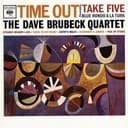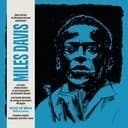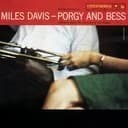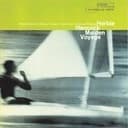Formula, Intervals, and the Chromatic Passing Tone
The D bebop major scale follows the interval formula of 2-2-1-2-1-1-2-1 semitones, producing the intervallic structure: root (1), major second (2), major third (3), perfect fourth (4), perfect fifth (5), augmented fifth (#5), major sixth (6), and major seventh (7). The notes D, E, F#, G, A, A#, B, and C# create an eight-note scale where the chromatic passing tone (A#) bridges the gap between the fifth (A) and sixth (B) degrees, solving the rhythmic challenge that bebop pioneers encountered when playing rapid eighth-note lines over major chords. This strategic placement ensures that when descending through the scale in eighth notes, chord tones (D, F#, A, C#) fall naturally on strong beats, creating smoother, more swinging bebop lines.
Application in Jazz Piano and Major Chord Improvisation
The D bebop major scale serves as the primary improvisational tool over Dmaj7 (D major seventh) and D6 (D major sixth) chords in jazz contexts, particularly effective when improvising over the I chord in ii-V-I progressions in the key of D. When soloing over D major harmony in tunes like "There Will Never Be Another You" (in D major) or "All The Things You Are" (when moving through D major sections), jazz pianists use the D bebop major scale to create lines that outline the D-F#-A-C# chord structure while incorporating characteristic bebop chromaticism. The scale works beautifully over sustained Dmaj7 chords, allowing improvisers to craft melodic lines that maintain harmonic clarity while adding the chromatic sophistication that defines the bebop language.
Piano Practice Techniques and Rhythmic Development
For effective piano practice of the D bebop major scale, begin with consistent fingering patterns that accommodate the eight-note structure. In the right hand ascending from D, use the fingering: 1(D)-2(E)-3(F#)-1(G)-2(A)-3(A#)-1(B)-2(C#)-3(D). Practice hands separately first, then hands together in parallel and contrary motion to develop coordination. Set your metronome to a comfortable tempo (60-80 BPM initially) and practice the scale in strict eighth notes, deliberately emphasizing chord tones (D, F#, A, C#) on downbeats to internalize the rhythmic placement that makes bebop lines swing. Progress to practicing the scale in triplets, sixteenth notes, and various rhythmic groupings, always maintaining awareness of where chord tones fall within each rhythmic pattern.
Common Chord Progressions and Harmonic Applications
The D bebop major scale finds frequent application in jazz ii-V-I progressions where Dmaj7 functions as the tonic (I) chord. In the key of D major, the progression Em7-A7-Dmaj7 provides the perfect context for employing this scale: play E Dorian over Em7, use A bebop dominant over the A7 chord, and resolve to D bebop major over Dmaj7. The scale also works beautifully in modal jazz contexts where Dmaj7 harmony is featured prominently, and in contemporary jazz compositions that emphasize major tonalities. Practice applying the scale over standard jazz progressions in D major to develop fluency and musical vocabulary.
Relationships to Other Scales and Modes
The D bebop major scale shares its foundational structure with the D major scale (also known as D Ionian), differing only by the addition of the augmented fifth (A#) chromatic passing tone. The D bebop dominant scale serves as the parallel bebop scale, sharing the same root but built on a dominant (Mixolydian) foundation with a flatted seventh. Jazz pianists develop fluency with multiple major scale options—bebop major, Lydian, major pentatonic—learning to choose the appropriate scale based on harmonic context and desired musical effect. Exploring the relationship between D bebop major and D harmonic major can also reveal interesting melodic possibilities for advanced improvisation.
Historical Context and Bebop Legacy
The bebop major scale emerged during the 1940s bebop revolution when jazz pioneers like Charlie Parker, Dizzy Gillespie, and Bud Powell developed new improvisational approaches to handle the fast tempos and complex harmonies of modern jazz. The addition of the chromatic passing tone between the fifth and sixth degrees solved a practical problem: when playing continuous eighth notes over a seven-note scale, chord tones would alternate between falling on downbeats and upbeats, creating rhythmic inconsistency. By adding an eighth note, bebop musicians ensured that chord tones could consistently land on strong beats, creating smoother, more swinging lines. This innovation became a defining characteristic of bebop vocabulary and remains essential for contemporary jazz pianists seeking authentic bebop phrasing.





